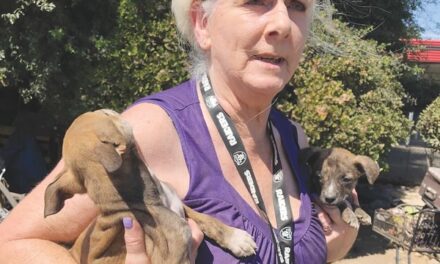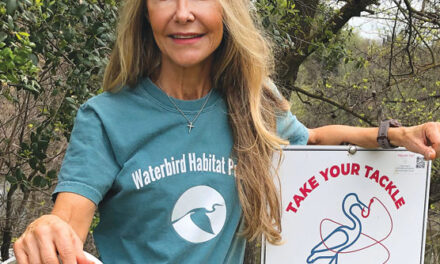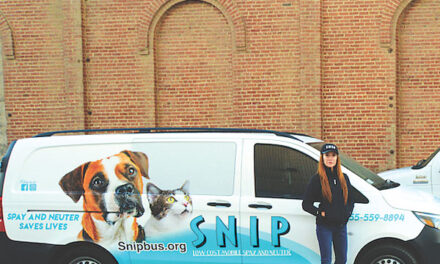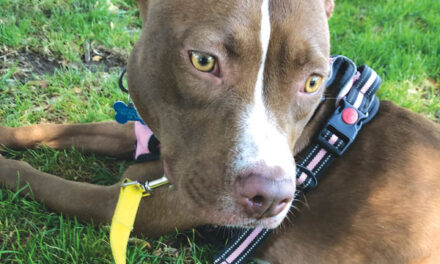Out of the Dark
Retiring shelter leader Gina Knepp isn’t done with Front Street
By Cathryn Rakich
October 2019
By her own admission, Gina Knepp didn’t know a pit bull from a Pomeranian.
“But I knew how to motivate people. How to get energy behind the mission,” says Knepp, who took over as animal care services manager at the city’s Front Street shelter in 2011.
Her mission was to turn around a failing facility with an abysmal 20 percent “live release rate”—the percentage of animals leaving the shelter alive.
Fast forward to July 2019. The city shelter hit an all-time-high live release rate of 91 percent. “We did a complete flip, but it took a lot of work,” Knepp says. “Now how do you hold onto it?”
How indeed—especially with Knepp retiring this month after 33 years with the city of Sacramento, including 20 years with the Sacramento Police Department 911 call center.
After Sac PD, Knepp managed the city’s 311 service center. Then she was given a temporary assignment at Front Street. “My boss sent me over here to close the place down,” she says. The city planned to outsource shelter operations.
After three months, Knepp knew “we can do better than this. I was motivated by the 31 employees that were potentially going to lose their jobs.”
“At the time Gina stepped in as the acting manager, the shelter seemed broken in spirit and functionality,” says Ellen Nakata-Harper, a volunteer since 2007. “Gina brought leadership to the shelter. She listened, motivated, valued and empowered staff and volunteers.
“I always say that Gina brought Front Street out of the dark ages into a shelter renaissance.”
Under Knepp’s leadership, shelter staff has increased to 53 employees. The budget has grown from $3.2 million to $5.9 million.
“The City Council and city manager have paid attention to the good work we do,” Knepp says. “It’s expensive. Saving lives is not cheap. Especially all the medical care we do,” which includes going above and beyond to save each pet.
“When a dog comes in with a fractured leg, in the old days we would euthanize it. Not today. We are getting the orthopedic surgeon who is going to fix that fracture. And the dog is going to go into foster until he’s well enough. Then he’s going to a new home. But it’s not cheap. Tax dollars don’t cover that.”
The former culture was to euthanize all animals that failed their behavior tests, as well as cats considered feral, and puppies and kittens that weighed less than 2 pounds.
“That was one of the things I didn’t understand,” Knepp says. “This box of kittens would come in. They weighed 1.9 pounds and they automatically got euthanized. That’s not the way it is any more.”
How does the shelter save lives with limited capacity? More than 100 dogs and approximately 600 kittens are in foster homes. “We bring in about 3,400 kittens that are 8 weeks or under every year. Just think, all of those kittens used to die, but they don’t anymore because people help us by fostering. How cool is that?”
Also key to positive change has been “rebranding,” Knepp explains, which included ditching the old name, City Animal Care and Control, and switching to Front Street Animal Shelter.
“That was one of the first things we did. I told everybody here we would never call ourselves anything but Front Street.
“Where are we? We’re on Front Street. People weren’t coming here. Now this place is a vibrant hub of activity.”
Under Interstate 5 and off the beaten path, the city shelter has been at the same spot since 1910. “We don’t have the nicest, newest shelter. We’re overcrowded. We don’t have the biggest budget. But we have the biggest heart.”
Knepp visualizes a second larger location in a retail area with higher visibility. “We know that concept works. We could have a tap room on one side and play with puppies. On the other side have tea or ice cream and play with kittens.”
Knepp has found success in the power of creative thinking, community outreach and social media. “Social media is the most amazing thing ever invented,” she says. “We have 190,000 followers” on Facebook, where staff routinely post heartwarming videos of shelter animals.
“It’s all about telling stories. People want to know what you’re doing. What are your struggles? What are your successes?”
Knepp’s creative endeavors to gain recognition and community support have included jumping out of an airplane, off-site adoption events and sleeping in a dog kennel all night for the Big Day of Giving.
“On the Big Day of Giving we have been on the top of the leader board for the last three years with the most individual donors. We don’t have the richest ones, but we have the most. That means we have a very broad reach of support in the community.”
Born in Sacramento, Knepp lives in her childhood home in Hollywood Park with husband, Chris, two dogs and a cat. “Before I got this job, I wasn’t a crazy animal person. But my husband was. I never quite understood it—but I understand it now.”
Their dog, Coal, is an 8-year-old black lab that came to the shelter as a puppy soon after Knepp took over. Charlotte is an 11-year-old blind English Cocker Spaniel who Knepp fostered (and ultimately kept) through NorCal Cocker Rescue. “I have an affection for cockers,” she says.
Kit T Kat is a 17-pound Maine Coon who is “more like a dog.” Two of the Knepp family dogs died last year. “That was hard. But I believe in getting another one.
“This is my theory—God didn’t make animals to live as long as we do so we could save lots of them in our lifetime. We are capable of a lot of love.”
Though Knepp is retiring this month, she is not done with Front Street. In her first year out, her personal goal is to raise $1 million for the shelter. Fundraising is critical. “We can’t survive without it. The tax base is simply not enough to do what the community expects us to do.
“I’ve done everything I can personally to bring Front Street to this level. The next person can take it to the next level. And I’ll be in the wings supporting them.”
Cathryn Rakich can be reached at crakich@surewest.net. Follow us on Facebook, Twitter and Instagram: @insidesacramento.





















